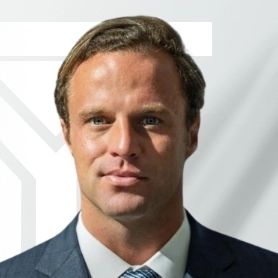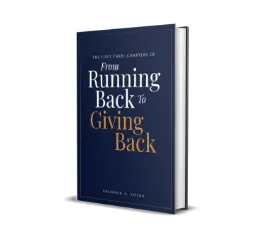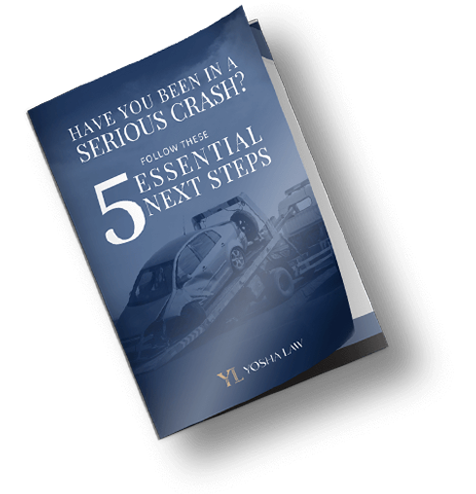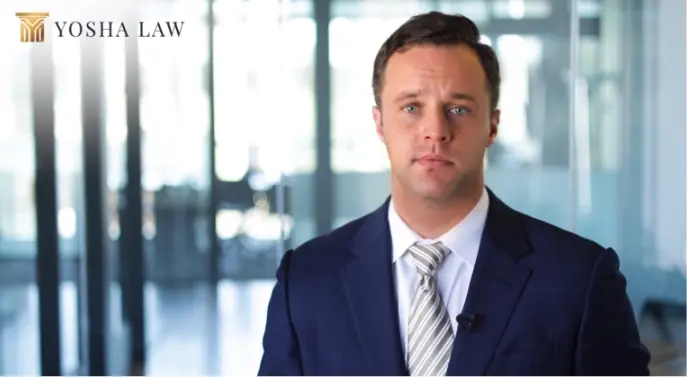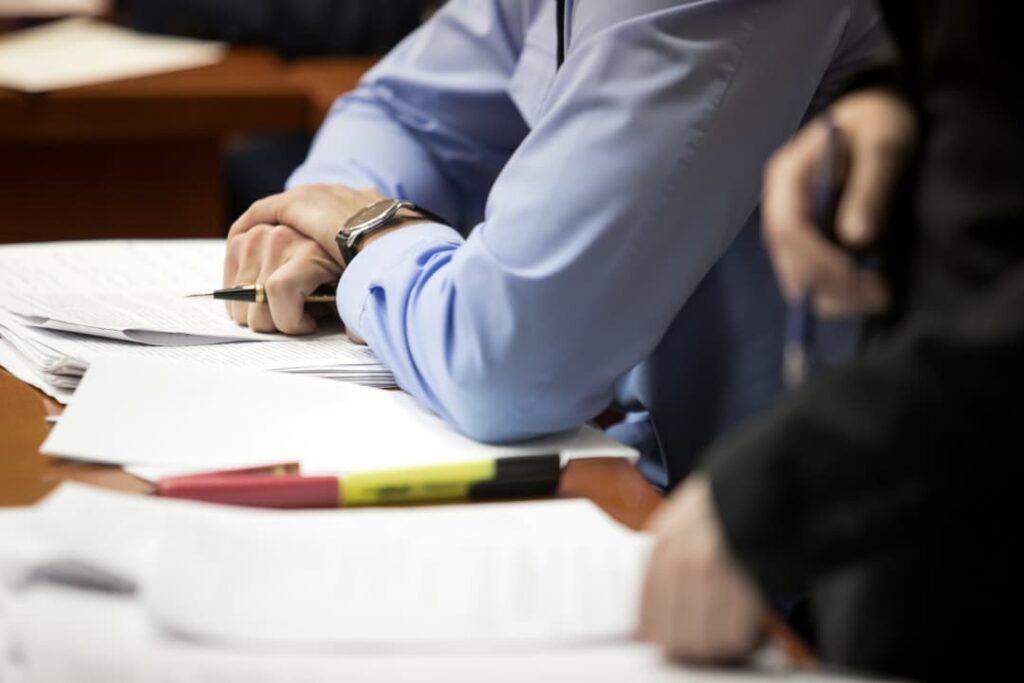
In the majority of circumstances, personal injury cases are resolved before they ever get to a courtroom. But what happens when a personal injury lawsuit goes all the way to trial? What should you expect to happen when you are the plaintiff in a personal injury trial?
Let’s break down the 8 stages of a jury trial, which are:
- Jury selection
- Opening statements from attorneys
- Witness testimony
- Cross-examination
- Closing arguments
- Instructions to the jury
- Jury deliberation
- Announcement of the verdict
It is important to choose a lawyer who can help you through the entire process, including gathering evidence, filing paperwork, selecting forensic experts, negotiating with the insurance company, and taking the case all the way to trial if necessary.
At Yosha Law firm, we support our clients every step of the way. If the case needs to go to trial, you can rest assured knowing that we will be there to answer your questions and guide you.
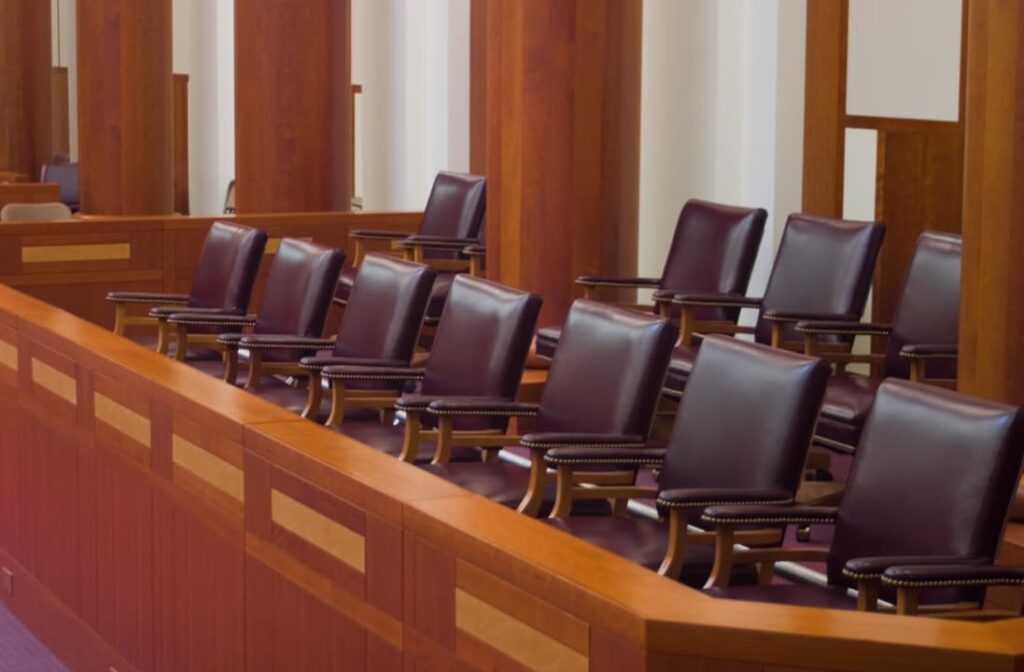
Jury Selection
If your case has gone to a bench trial, then there is no jury selection. That’s because bench trials are overseen by a judge–and only a judge.
However, if your case is going to be heard by a jury, then the first official step of the trial is jury selection.
Here’s how that works:
- Potential jurors are brought to the courthouse. Several will be dismissed immediately because they are unable to serve on the jury, perhaps because of an illness, family commitments, or planned travel.
- The judge will explain the case so that the potential jurors have an idea of what the proceedings will address.
- Attorneys for both the plaintiff and the defendant will ask the potential jurors questions related to the case, usually to determine any biases or life experiences that could make it difficult or impossible for them to render a fair verdict.
- After all of the questioning, a final jury will be selected.
Opening Statements From Attorneys
The attorneys for both the plaintiff and the defendant will share an opening statement with the jury, explaining what they plan for the evidence to show.
In a simple case involving just one defendant and one plaintiff, this might take 1-2 hours. The more defendants and plaintiffs there are, the longer this will take, as each individual’s attorney may give opening statements.
As the attorney for the plaintiff, our job is to demonstrate that the defendant’s actions caused the personal injury and subsequent damages to the plaintiff. During the opening arguments, we give an overview of what the evidence will show.
Typically, the defense attorney’s statement comes after the plaintiff’s attorney makes their statement, as the defendant is answering the claims of the plaintiff.
Witness Testimony
At this point in the trial, each attorney will call witnesses to the stand to testify with their evidence.
Witnesses may include:
- The defendant
- The spouse or significant other of the defendant
- Other family members and friends
- People who witnessed the accident
- Physicians and other medical providers
- Expert witnesses who can explain and contextualize the cause and effects of the accident
Through witness testimony, the jury may be able to see images, documents, medical statements, video documentation, diagrams, surveillance recordings, and other forms of evidence regarding the events as they occurred.
Cross-Examination
After the witness is sworn in and provides their testimony to the attorney who called them to the stand, the cross-examination stage can begin.
At this point, the opposing party asks questions of the witness, usually as part of an effort to discredit their testimony. They may also seek to “water down” the testimony, which may lessen its impact with the jury.
After cross-examination, the original side that called the witness will have one more opportunity to ask follow-up questions.
Closing Arguments
After both sides have presented their evidence and responded to the other’s arguments, the attorneys for the defendant and the plaintiff rest. From this point forward, no other evidence can be provided to the jury.
Attorneys use closing arguments to summarize and analyze the evidence, demonstrating how their argument is supported by the law–and why the jury should find in their client’s favor.
The plaintiff’s attorney makes their closing arguments first, followed by the defendant’s attorney. The plaintiff gets the last word by providing a short rebuttal to the defendant’s closing remarks.
Instructions to the Jury
Technically, this can be done before or after the closing arguments.
These instructions are provided to the jury by the judge, who explains the legal framework for their verdict. The judge may provide an overview of legal definitions and limitations that affect the jury’s decision. Additionally, the judge will explain what they need to decide regarding the verdict and any sort of compensation.
You can expect jury instructions to last about 20 minutes.
You Get ONE Shot At Full Justice. We Make Sure You Take It.
*Available 24/7 & Obligation-Free
Jury Deliberation
While the jury deliberates in a designated room, the plaintiff waits nearby to take questions from the jury to the judge. If a question is asked of the judge, it is also shown to both attorneys before an answer is provided.
The jury, led by the jury foreperson, considers the case and all of the evidence that they were provided. They must agree on the answers to questions like this:
- Was the defendant responsible for the plaintiff’s pain, suffering, and other damages?
- If so, what is the appropriate amount of compensation for the plaintiff’s damages?
Jury deliberation may take between a few hours or a few days, depending upon the complexity of the case.
Announcement of the Verdict
After the jury reaches a decision, the foreperson lets the bailiff know that a decision has been reached. The bailiff then informs the judge, who in turn informs the attorneys. Each attorney will notify their own client, and all parties will return to the courtroom.
The jury returns to the jury box, where they sat throughout the trial, and the foreperson provides a written verdict to the bailiff, who hands it to the clerk, who finally hands it to the judge. After confirming that the jury has indeed reached a verdict, the judge then announces the verdict to everyone in the courtroom.
If a compensation amount has been determined, it will also be announced at this time.
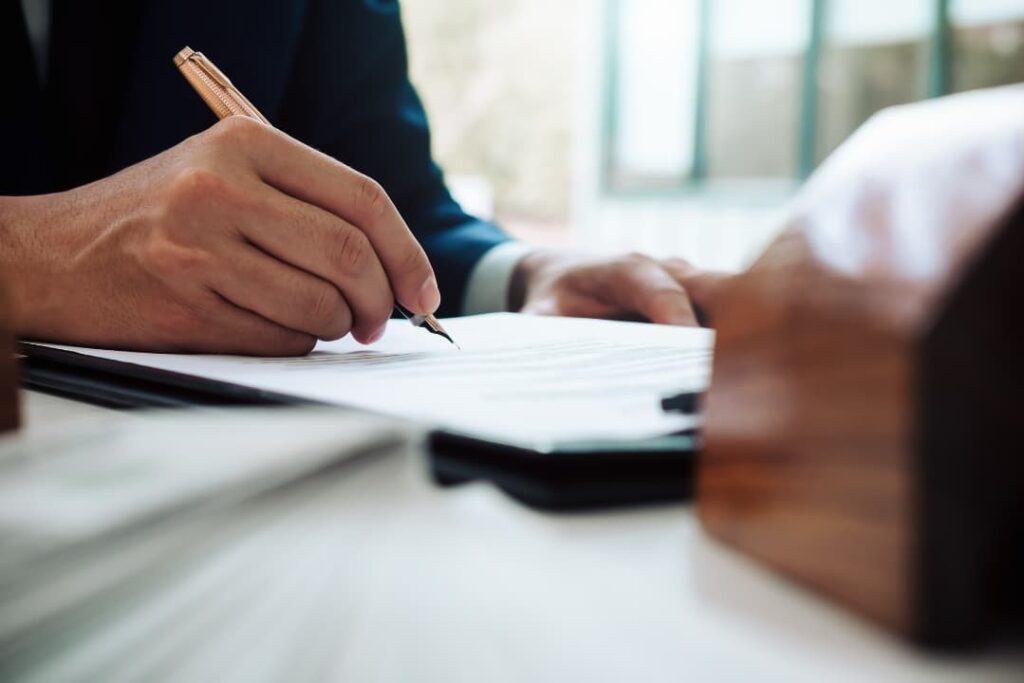
What about bench trials?
A bench trial is also called a judge trial. When you have this kind of trial, the judge makes all of the decisions regarding your case, as there is no jury. The judge will hear the evidence, ask questions, and make a ruling.
These are some of the key differences between a jury vs. a judge trial:
- Judge trials are almost always much shorter (usually about a day long).
- If your attorney is concerned that the legal jargon and complexity may make it difficult for a jury to follow their arguments, they may recommend a jury trial.
- A jury trial is usually more appealing for a personal injury case because emotional appeals are important for demonstrating pain and suffering, and judges may be less swayed by these appeals than a jury would be.
Types of Personal Injury Lawsuits That Can Go to Trial
At Yosha Law Firm, we represent clients who have been injured in many kinds of accidents, including:
- Car Accidents
- Truck Accidents
- Motorcycle Accidents
- Traumatic Brain Injuries
- Slip & Falls
- Pedestrian Accidents
- Catastrophic Injuries
- Wrongful Death
At Yosha Law, here’s what our clients can expect during a personal injury trial in Indiana
Most of the time, we are able to resolve our clients’ cases before they ever get to a courtroom. That’s because we have significant experience negotiating with insurance companies to make sure our clients get the compensation they deserve for damages related to a personal injury case.
When our clients’ cases do go to trial, this is what you can expect:
- Clear information about each step in the process, including what to expect
- Thorough examination of all evidence and a strong presentation of your case
- Support as you prepare to testify, including guidance on what questions you may be asked by the defense and how best to prepare
- Expert witnesses that will explain to the jury how your injuries and damages were caused by the defendant’s actions
- Access to your legal team as we answer your questions throughout the trial
Yosha Law–Supporting Personal Injury Victims in Indiana Since 1963
Our testimonials tell the story of our compassionate, client-focused legal services. For more than 50 years, our law firm has been Hoosiers’ go-to resource for a personal injury attorney who cares. We see our clients as family, and we don’t want our family to suffer from the effects of a personal injury without the compensation they deserve.
Sometimes, that means going all the way to a jury trial.
If you or someone you love has been injured because of another person’s negligence or carelessness, reach out to us at Yosha Law Firm so we can help you get back on your feet. You shouldn’t continue to suffer financial losses because of your injuries, and you deserve compensation for your pain.
You can reach us 24 hours a day, 7 days a week. Schedule a free consultation to have one of our attorneys review your case.
